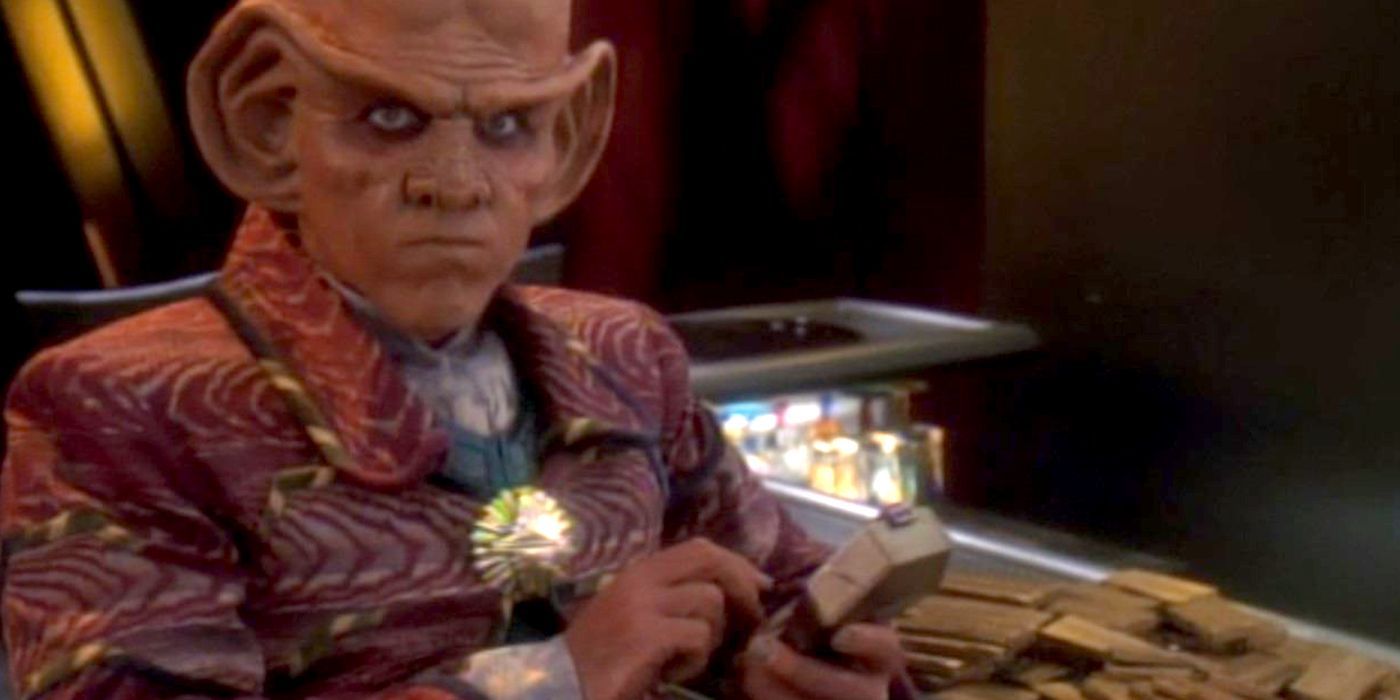WARNING: The following contains spoilers for Star Trek: Discovery Season 4, Episode 8, "All In," streaming now on Paramount+.
Star Trek depicts humanity as reaching a utopian state, living in widespread harmony with one another and the many species that make up the United Federation of Planets. Among the societal element that the Federation eschews to reach this enlightened state is a conventional monetary system, with Jean-Luc Picard briefly explaining in Star Trek: The Next Generation that the need for currency has since been rendered obsolete. However, a form of currency has been widely used in the Star Trek Universe, including on Starfleet facilities: Latinum. And for all its rejection of currency, latinum continues to be used in 32nd century of Star Trek: Discovery.
The idea that the Federation moved beyond currency was first hinted at in Star Trek IV: The Voyage Home when the time-traveling Enterprise crew realizes that Earth still uses currency in the late 21st century as they encounter difficulties with exact change for transportation. This was expanded in TNG as Picard explains that society is more focused on eliminating things like hunger while improving civilization standards as a whole rather than being preoccupied by the accumulation of material wealth. However, Star Trek: Deep Space Nine introduced the concept that the Ferengi Alliance and Cardassian Union both used latinum as their primary currency, with the rare liquid metal compressed in gold plating.
Many of Quark's schemes in DS9 involved him devising get-rich plans to acquire as much latinum as possible, competing with other Ferengi visiting the station. For the Federation's part, it did not use latinum internally but are implied to have its own supply of latinum to deal and barter with other civilizations that used the currency. The 1994 behind-the-scenes production book The Making of Star Trek: Deep Space Nine hinted that one of the reasons for latinum's increased value is that the substance is not able to be reproduced by replicators, leaving latinum exclusively as a naturally occurring substance.
Discovery confirms that, in the 32nd century, Starfleet does indeed have a supply of latinum, with Captain Michael Burnham using a portion to acquire star charts from beyond the galaxy's edge. Burnham tries to acquire more latinum to outbid Cleveland "Book" Booker's offer to purchase some rare isolinium, with the currency throughout the casino where the illicit black market business is being run. This suggests that even centuries after the events of DS9, latinum continues to be used as a major form of currency in the more lawless parts of the galaxy outside of Federation space, with Starfleet possessing its own strategic reserve for just such an occasion.
While the idea of the Federation having evolved beyond the use of a monetary system lines up with Star Trek's utopian vision of humanity's future, the inclusion of latinum provides a plot device to give its characters something to barter with when interacting with more capitalistic entities. While the Federation may still be rebuilding itself in the 32nd century, as depicted by Discovery, it still has enough resources to interact with the more nefarious organizations and markets outside of Starfleet's jurisdiction. Just because the Federation stands enlightened and evolved, this distinction isn't shared by other forces in the galaxy and latinum provides the means to deal with them on their own terms.
Created by Bryan Fuller and Alex Kurtzman, Star Trek: Discovery releases new episodes Thursdays on Paramount+.



